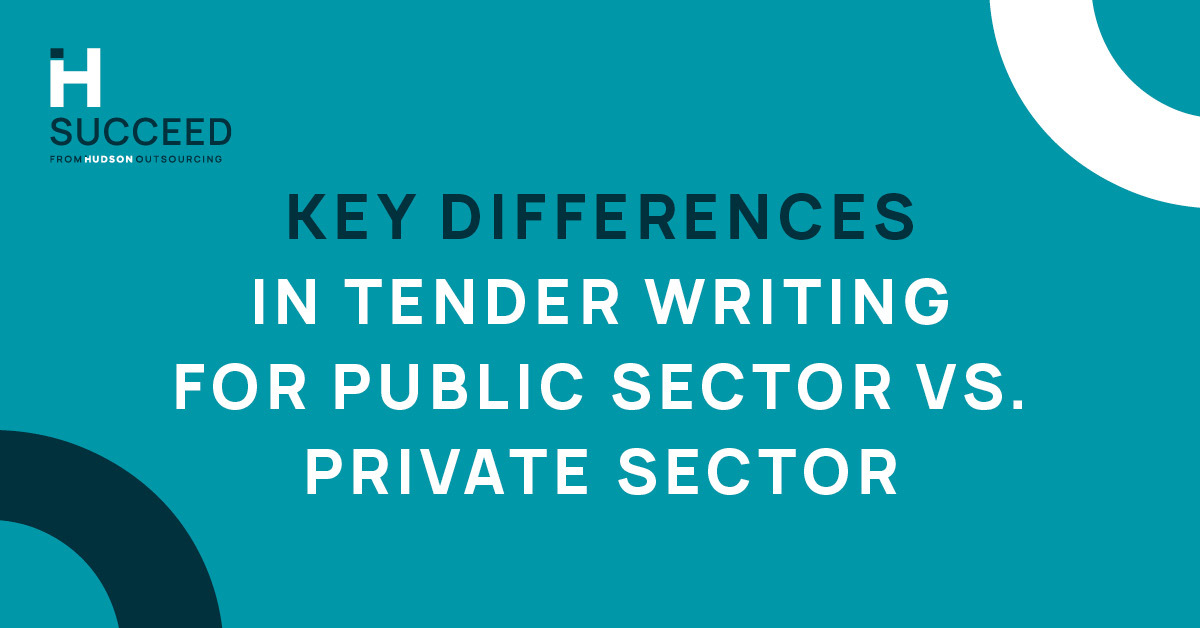
Tender writing for the public sector requires a specific approach that varies significantly from tender writing in the private sector. Understanding these differences is crucial for businesses aiming to secure contracts in either arena. Each sector has its own regulations, expectations, and evaluation criteria, which can greatly influence the success of a tender submission.
In this blog, we will delve into the key differences in tender writing for the public and private sectors, highlighting essential considerations for each.
Regulatory framework
One of the most pronounced differences in tender writing for the public sector is the regulatory framework governing the procurement process. Public sector tenders must comply with strict laws and regulations, such as the Public Contracts Regulations and EU procurement directives (where applicable). These regulations ensure transparency, fairness, and accountability in the tendering process.
In contrast, the private sector operates with more flexibility and fewer regulations. Companies can set their own guidelines for how tenders are prepared and evaluated, allowing for a more streamlined and creative approach. This flexibility means that while private sector tenders may focus on innovation and strategic alignment, public sector tenders must adhere closely to prescribed formats and criteria.
Evaluation criteria
The evaluation criteria for tenders differ significantly between the public and private sectors. Public sector contracts often use a scoring matrix based on specific metrics such as price, quality, and social value. This structured approach is designed to provide an objective framework for assessing bids, ensuring that all submissions are evaluated fairly against the same standards.
In the private sector, the evaluation process may be more subjective and flexible. Companies may prioritise factors such as the relationship with the supplier, the potential for innovation, and overall strategic fit. This can lead to a more narrative-driven tender, where the emphasis is on storytelling and demonstrating how the proposal aligns with the company’s goals.
Documentation requirements
The level of documentation required in tender writing varies greatly between sectors. For public sector tenders, there is often a demand for extensive documentation that includes detailed methodologies, project timelines, risk assessments, and compliance information. This thoroughness is intended to ensure that all potential risks are addressed and that the tender meets all legal requirements.
In the private sector, while comprehensive documentation is still important, the expectations are generally less stringent. Private companies often prefer concise proposals that focus on key benefits and value propositions, allowing them to quickly assess the relevance of the submission without wading through excessive detail. This means that private sector tender writers can often take a more succinct and persuasive approach.
Timeframes and submission processes
Another significant difference is the timeframes and submission processes involved in each sector. Public sector tenders usually have fixed timelines that must be strictly followed. Missing a deadline can result in automatic disqualification, necessitating a high degree of organisation and time management from those involved in tender writing for the public sector.
On the other hand, the private sector may offer more leeway in terms of submission deadlines. While punctuality remains important, companies may allow for last-minute refinements or discussions around timelines. This flexibility can enable businesses to polish their proposals up until the final submission, which can be a strategic advantage in competitive bidding situations.
Focus on social value
Public sector tenders often place a strong emphasis on social value and community impact. This means that proposals must not only address the project requirements but also demonstrate how they will benefit the community, promote sustainability, or enhance local economic growth. Tender writing for the public sector requires a clear articulation of these benefits, which are increasingly becoming a vital part of the evaluation process.
In contrast, while the private sector may consider corporate social responsibility (CSR), it is typically less of a focal point in the evaluation of tenders. Private companies may prioritise profitability and efficiency, which means that while social value is appreciated, it may not be as heavily weighted in the decision-making process.
Conclusion
Understanding the key differences in tender writing for the public sector versus the private sector is essential for businesses looking to succeed in both areas. From regulatory frameworks and evaluation criteria to documentation requirements and emphasis on social value, each sector presents unique challenges and opportunities.
By tailoring your approach to meet the specific demands of each sector, you can enhance your chances of winning contracts and establishing valuable partnerships.
If you’re seeking expert guidance in navigating the complexities of tender writing for the public sector or the private sector, look no further than Hudson Outsourcing. Our team of professionals can provide tailored support and resources to help you create compelling, compliant, and competitive tenders.
Follow us for insights and assistance that can elevate your tender writing process and improve your success rate in securing contracts. Let Hudson Outsourcing be your partner in achieving tender success!
Related: Tender Trends – Public Vs Private Sector





